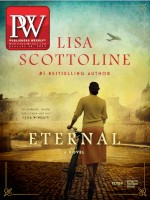By many measures, 2020 was an unusual year in publishing, and that extended to Publishers Weekly’s bestsellers lists. In a rare occurrence, the Big Five publishers’ hold over the adult hardcover and paperback bestsellers lists declined in 2020 compared to 2019, with independent publishers gaining ground.
PW runs two hardcover and two paperback lists each week, and each list has 20 titles on it, meaning that in the course of a year there are 2,080 hardcover and 2,080 paperback positions on the lists total. On the hardcover side, the Big Five controlled 89.1% of all available bestseller slots—down from 92.5% in 2019. They had an even greater loss in paperback, with their share of positions falling to 79%, versus 83.7% in 2019. And among the top publishers there was a bit of shuffling. Simon & Schuster gained ground on the hardcover side, moving it ahead of Hachette and Macmillan to become the #3 house in terms of bestsellers. Hachette paperbacks performed well, gaining ground on HarperCollins and Penguin Random House. Macmillan lost share in both hardcover and paperback formats.
Independent publishers’ improvement in paperback was tied to two factors: an explosion in the number of presses and self-published authors that reached the trade paperback lists compared to 2019, as well as a decline in the share of bestseller slots held by the top houses on the mass market lists. Kensington improved its mass market performance, placing 41 titles on the list last year, up from 35 in 2019—and it took 182 slots in 2020 compared to 135 in 2019. HC and its Harlequin and Mira imprints had 42 books hit the mass market list, but they stayed much longer than Kensington’s titles and occupied 386 positions for the year.
A whopping 55 publishers hit the trade paperback list in 2020, though 41 of them reached the chart with only one book. In 2019, 13 publishers reached the trade paper list, and of those, 10 placed only one title. Viz had the strongest showing among the indie publishers, placing 19 titles on the trade paper list last year.
Independent publishers also had more titles make the hardcover list in 2020 compared to 2019. That was especially true in nonfiction, where 36 indie publishers placed books on the list, up from 22 in 2019. In addition to such mainstays as Hay House, Houghton Mifflin Harcourt, Norton, Regnery, and Wiley, newcomers last year included Chronicle, Hearst Home, and Newsmax.
Taking an overall look at the bestsellers, this year there again was a pronounced disconnect between the books that grabbed the media’s attention and those that resonated with book buyers and readers. While many of the most-talked-about titles—such as Mary Trump’s Too Much and Never Enough (S&S) and Ibram X. Kendi’s How to Be an Antiracist (One World)—did land on PW’s lists, they didn’t have 15-week staying power. The increased speed of the news cycle seemed to propel the books onto the list quickly, but then the cycle moved on and they fell off just as quickly (albeit after posting impressive sales figures).
As it turns out, the pandemic, politics, and race were not what people wanted to delve into in their reading. One exception was Caste: The Origin of Our Discontents by Isabel Wilkerson (Random House), a 20-week bestseller helped along by Oprah’s Book Club, which was a favorite of critics, booksellers, and readers alike.
Though Covid and the election drowned out much of the #MeToo news that has dominated the past few years, women were not silent. The hardcover nonfiction list was topped by Untamed (Dial), Glennon Doyle’s exploration of women’s empowerment, which stayed on the list for 41 weeks. A mix of history, self-help, relationship, sociology, and cookbook titles also had long stays on the nonfiction list.
The fiction choices of the public were also not in accord with those of the publishing pundits. Highly touted novels such as Elana Ferrante’s The Lying Life of Adults (Europa) and Lily King’s Writers and Lovers (Grove) made it onto the list—for four weeks and one week, respectively—but didn’t have staying power. Meanwhile a debut novel managed to remain on the fiction list for 15 weeks: Kiley Reid’s Such a Fun Age (Putnam).
One book that did live up to its hype—though not for the expected reasons—was American Dirt by Jeanine Cummins, which garnered great attention from both sides of the aisle, so to speak. Though it had Oprah’s blessing, it was also the subject of cacophonous controversy around issues of cultural appropriation and stayed a bestseller for 38 weeks.
Other buzzed-about hardcovers that didn’t disappoint were Brit Bennett’s sophomore effort, The Vanishing Half (Riverhead), and Anne Patchett’s The Dutch House (Harper), which stood firm for 29 and 21 weeks, respectively. And, as always, room was made for über-authors such as Stephen King and John Grisham.
Topping the list at 44 weeks was an illustrated novel, Charley Mackesy’s inspirational parable The Boy, the Mole, the Fox and the Horse (HarperOne).



 Volume 268
Issue 3
01/18/2021
Volume 268
Issue 3
01/18/2021





